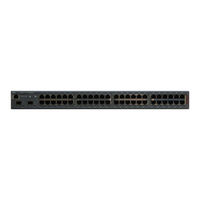User Manuals: Avaya C360 Manager Stackable Switch
Manuals and User Guides for Avaya C360 Manager Stackable Switch. We have 4 Avaya C360 Manager Stackable Switch manuals available for free PDF download: User Manual, Installation And Configuration Manual, Quick Start For Hardware Installation
Avaya C360 Manager Installation And Configuration Manual (248 pages)
Converged Stackable Switches
Table of Contents
-
-
-
-
SNMP Support
75 -
Radius
82
-
-
Introduction
97 -
System Logging
106-
-
Sinks107
-
Syslog Servers108
-
-
-
-
Ethernet
114-
Fast Ethernet114
-
Gigabit Ethernet114
-
-
Auto-Negotiation115
-
Speed115
-
Flow Control116
-
Priority116
-
MAC Address117
-
CAM Table117
-
MAC Aging117
-
-
-
Vlans
120-
VLAN Overview120
-
VLAN Tagging121
-
-
MAC Security
136 -
Port Redundancy
140 -
-
Overview144
-
-
Rmon
147-
RMON Overview147
-
-
Smon
149-
SMON Overview149
-
-
Port Mirroring
151 -
Weighted Queuing
152 -
LLDP Agent
153
-
-
-
What Is Routing
166 -
IP Configuration
169 -
-
RIP Overview172
-
Rip2173
-
RIP CLI Commands173
-
-
-
OSPF Overview175
-
-
-
ARP Overview181
-
The ARP Table182
-
-
ARP CLI Commands182
-
-
-
-
Bootp183
-
Dhcp183
-
DHCP/BOOTP Relay183
-
-
-
-
VRRP Overview186
-
-
-
-
Overview
203 -
Documentation
209
-
-
-
-
Qos Mapping229
-
-
-
Introduction
231
-
-
-
-
Ieee233
-
IETF - Layer 2233
-
IETF - Layer 3234
-
-
-
-
Physical
237 -
Environmental
238 -
Safety
238 -
Mtbf
239 -
Interfaces
239 -
-
LX Transceiver239
-
SX Transceiver240
-
ELX Transceiver240
-
-
Ethernet
242
-
Advertisement
Avaya C360 Manager Installation And Configuration Manual (238 pages)
Converged Stackable Switches
Table of Contents
-
-
-
-
SNMP Support
73 -
Radius
80
-
-
Introduction
95 -
System Logging
104-
-
Sinks105
-
Syslog Servers106
-
-
-
-
Ethernet
111-
Fast Ethernet112
-
Gigabit Ethernet112
-
-
Auto-Negotiation113
-
Speed113
-
Flow Control113
-
Priority114
-
MAC Address114
-
CAM Table115
-
MAC Aging115
-
-
-
Vlans
117-
VLAN Overview117
-
VLAN Tagging119
-
-
MAC Security
132 -
Port Redundancy
135 -
Rmon
141-
RMON Overview141
-
-
Smon
143-
SMON Overview143
-
-
Port Mirroring
144 -
Weighted Queuing
145 -
LLDP Agent
146
-
-
-
What Is Routing
158 -
IP Configuration
162 -
-
RIP Overview164
-
Rip2165
-
RIP CLI Commands166
-
-
-
OSPF Overview167
-
-
-
ARP Overview172
-
The ARP Table173
-
-
ARP CLI Commands174
-
-
-
-
Bootp175
-
Dhcp175
-
DHCP/BOOTP Relay175
-
-
-
-
VRRP Overview177
-
-
-
-
Overview
193 -
Documentation
198
-
-
-
-
Qos Mapping217
-
-
-
Introduction
219
-
-
-
-
Ieee221
-
IETF - Layer 2221
-
IETF - Layer 3222
-
-
-
-
Physical
225 -
Environmental
227 -
Safety
227 -
Mtbf
228 -
Interfaces
228 -
-
LX Transceiver228
-
SX Transceiver229
-
ELX Transceiver229
-
-
Ethernet
231
-
Avaya C360 Manager User Manual (286 pages)
Integrated Management 3.0
Table of Contents
-
Preface
11 -
-
-
Tree View25
-
Desktop25
-
Chassis View26
-
Dialog Area29
-
-
-
-
-
Voip Config90
-
Voip Status91
-
-
-
-
The Pie Chart146
-
Traffic Types147
-
-
-
-
-
Vlans Overview150
-
Master VLAN List150
-
VLAN Tags150
-
-
-
VLAN Tree152
-
Selection List153
-
-
Managing Vlans156
-
Creating Vlans156
-
Renaming Vlans157
-
Deleting Vlans159
-
-
-
-
Lags Overview163
-
Creating Lags165
-
Editing Lags165
-
The LAG Wizard165
-
Deleting Lags171
-
-
-
-
-
Router Modes222
-
Router222
-
Layer 2 Switch222
-
-
-
Toolbar224
-
Tree View225
-
Table Area226
-
Form Area226
-
Table Entries227
-
-
Editing Tables227
-
-
Running Changes228
-
-
-
-
Vlans233
-
-
-
IP Interfaces237
-
Routing Table239
-
ARP Table243
-
Dhcp245
-
Rip248
-
RIP Interfaces250
-
Ospf253
-
Vrrp262
-
VRRP Table264
-
Crtp267
-
CRTP Interfaces267
-
-
-
-
File Menu269
-
View Menu269
-
Configure Menu270
-
Actions Menu270
-
Tools Menu271
-
Help Menu271
-
-
-
File Menu272
-
Edit Menu272
-
View Menu272
-
Action Menu273
-
Help Menu273
-
-
Advertisement
Avaya C360 Manager Quick Start For Hardware Installation (36 pages)
Converged Stackable Switches
Table of Contents
Advertisement



